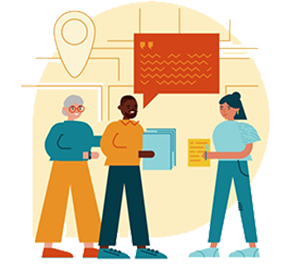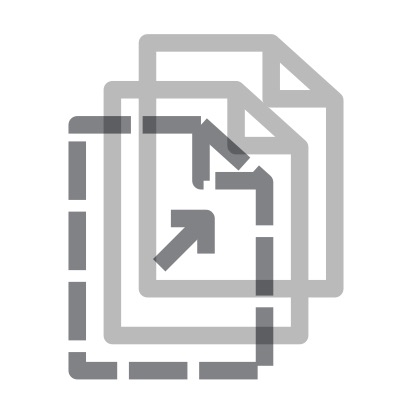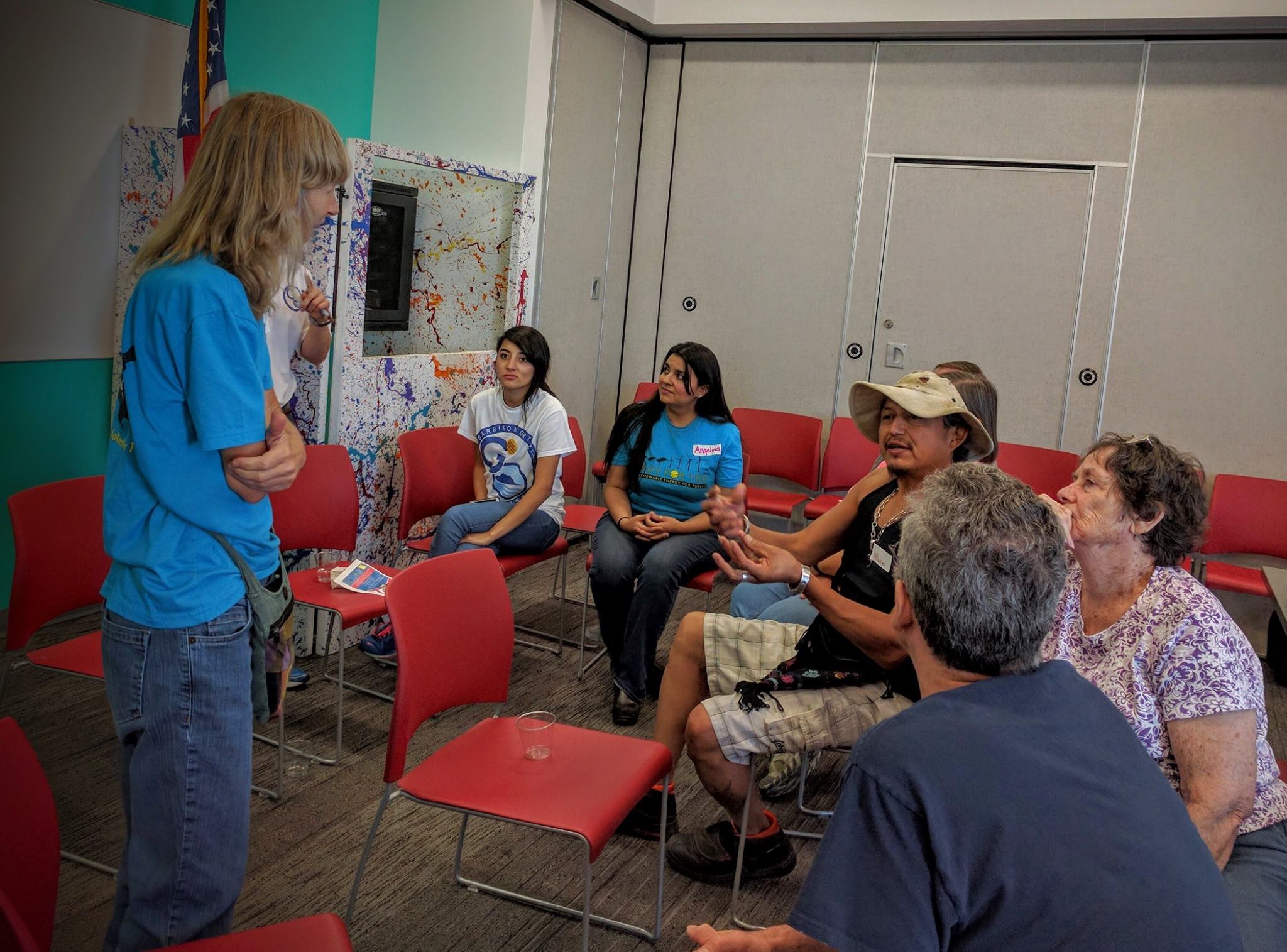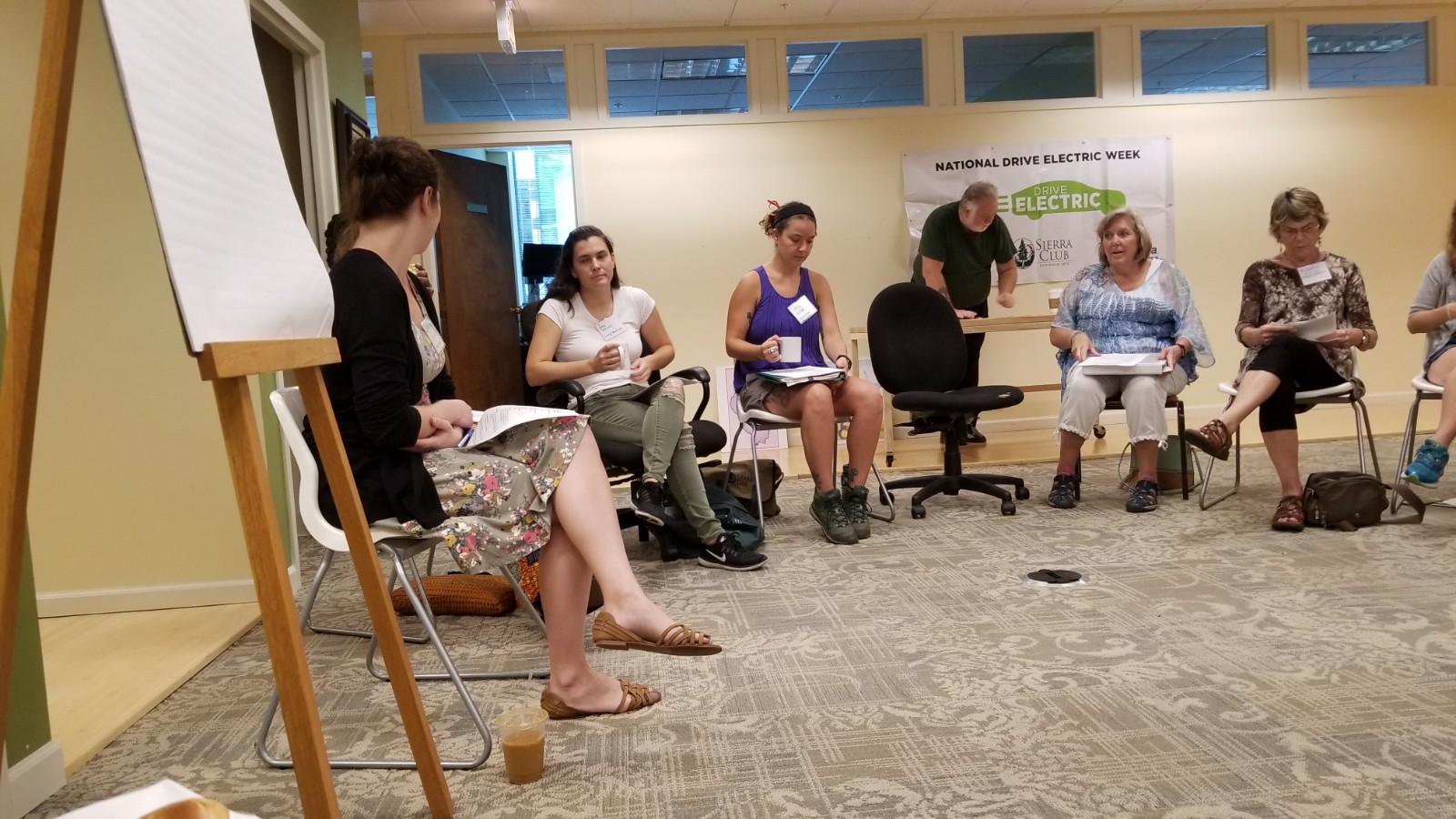Know Your Community

- Know Your Community
-
Phase 3
Plan Your Strategy
-
Phase 4
Public Launch
-
Phase 5
Organize!
-
Phase 6
Implementation and Beyond
-
Contact Us
Get help, give feedback, or share resources
Understand Your Community
Understanding your community is an important first step.
What does your community care about and what does it need? What are its values, its history? Who makes up your community? What are the different neighborhoods, institutions, schools and workplaces? Who has cultural or historical ties, and who depends on the area for food, water, recreation, community?
Community mapping is a process for building knowledge about a place and its people. It involves both traditional research methods to understand facts and numbers, as well as qualitative research to understand relationships and dynamics. Community mapping is mostly a listening process where you identify and seek to understand your community. Through strong mapping, you’ll be better able to tap into your community’s strengths, address barriers, and deepen relationships to envision a better future that meets everyone’s needs. What you learn during these conversations should be shared back to the people you talk with to confirm what you’re hearing.
You’ll need this information to get a clear understanding of your community and what role this campaign can play to support its unique needs. The goals you set and the plan to achieve them will lead toward the vision you've created through this process.
Who is most affected by pollution, energy costs, and climate change? Communities that are most impacted are called “frontline communities.”
Research
This process takes time, generally 4-8 weeks. While you may start this research and do community interviews yourself, look to bring in others, such as your core team, partners, and allies, so that what is learned is shared. What is gained in this process is helpful for everyone and will build understanding across your community about what the vision is and where it is coming from.
Community research is all about listening and learning. You’re not at a place yet to know what the community needs or the best route to get there—it’s not time yet to make the case for 100% renewable energy, even if you think you have some power to make the changes you want to see.
Before talking directly with people, do some initial research to inform your questions and build your list of who to meet with. Start this process by researching who can give you some insight into your community, how energy impacts different populations and groups in your community, where politics plays a role, and what the story is about clean energy and climate where you live. We know that people who are closest to the problem are closest to the solution. It’s key to understand which areas and populations are most affected by energy issues like pollution, high energy costs, and climate change impacts.

Photo by Laura Ferro
Here are some suggested questions and actions you can take to research the four main aspects of an energy campaign. Listen, research, and take good notes throughout this process.
Community
- Who is in the area? What organizations and groups are in the community? Who are the informal cultural leaders? What is the history of the peoples in the community? Are there cultural events and activities where people gather?
- What do they care about? Who cares about clean renewable energy, affordability and access, climate change, or transportation and transit? Who is impacted by these issues? What has been on top of people’s minds?
- What is in the area? What are the resources, institutions, features, landmarks, and entities? What impacts do they have? Where do people gather?
- What are issues or tensions in the community? How do they relate to a 100% clean and just energy future for all? Learn about race, immigration, law enforcement, jobs, recreation, health, and other hot-button issues in your community.
- Find more information about how to do community interviews below.
Energy
- Create a map and timeline of energy in your community. It is important to understand and continually tell the story of energy injustice where you live. Becoming familiar with your local electric utility and regulators, existing climate activism from frontline communities, and histories of environmental injustice will help you understand who is most impacted and how to address legacies of prejudice in the energy sector.
- Find and read community energy plans, climate action plans, and other documents related to energy in your community by visiting relevant websites. Where does your energy currently come from? What do people, institutions, and businesses pay for it? Who does and does not have access to affordable energy? How are decisions around energy made? How has it changed over the years?
- Find out who is doing what in your energy system, including planning for the future. Meet with them or their staff to get more specifics about their goals and learn what they see as a challenge in preparing to transition to renewable energy.
- Use the City Energy Research Template to help guide your research questions.

City Energy Research Template
A template of questions to understand city, state and community energy use.
Politics
- How are decisions made in your community around energy? Who are the decision makers? What do they care about? Who influences them? What issues do they prioritize?
- How is power shared? Who has political power and the ability to influence change? Who does not? What communities are the most vulnerable or impacted? Who should have power?
Narrative
- Who are the major voices speaking publicly on energy and climate in your community already? What stories are they sharing, and what’s their stance on the issues?
- What is the prevailing narrative related to energy, renewables, transportation, and climate change? What stories are in the public discussion that your campaign needs to bolster, debunk, or reframe?
- How do people in your community get information about energy and local politics?
- What is the general sentiment around clean energy and your decision makers?
Community interviews
After researching the basics of what’s happening in your community, it’s time to start building some relationships. In order to transition to a 100% clean future for all, your campaign should reflect the diverse experiences, needs, and interests of your community. The best way to do that is to start by listening.
The best way to start educating ourselves and our teams about our community's unique experiences and perspectives is by listening.
As part of the Sierra Club’s journey to becoming a more just, equitable, and inclusive organization internally and externally, the Sierra Club board of directors adopted the Jemez Principles for Democratic Organizing in 2014. We adapted and applied these principles to our own Campaign Principles. It requires starting by educating ourselves and our teams about the communities where we live and work, their unique experiences and perspectives, and we’ve learned that the best way to start is by listening.
Use community interviews to meet people in your community, get to know what they are concerned about, and start to think together about what the community needs are and how this campaign could work to address them. The goals for community interviews are to:
-
Engage potential leaders, partners, and allies from the beginning.
-
Understand power within the community, including your own power.
-
Understand who in the community this campaign needs to follow for leadership.
-
This information will help inform your organizing goals and strategy (see Phase 3: Plan Your Strategy).
Decide who to interview

Community members discuss what we need to push for to create the future they want to see for Pueblo, CO | Photo by Meral Sarper.
Make a list of what you need to know and what experiences and perspectives you might be lacking. Then think about who you could talk with to meet those needs.
You’ve already found some information around who can talk about the impacts of your current energy system—people impacted by energy costs or pollution. Look back to that research. Are there gaps you need to fill in for what the energy systems are in your community, how decisions around energy are made, and if there are people already working on clean energy in your community?
Here’s a list of folks to set up interviews with, but don’t limit yourself to this list! Aim for at least 10 conversations.
Be sure to reach out to:
-
City’s sustainability or public works office
-
Environmental justice (EJ) organizations
-
Community groups serving Black, indigenous, and communities of color
-
Local utility companies
-
Energy committees
-
County or regional transit agencies
-
Groups that work on low-income housing, energy efficiency, or alternative transportation
-
Renewable energy organizations
-
Mayor or local administrator's staff
-
Health issue-based or worker organizations
-
Civic organizations active in your community
-
Local colleges and universities
Consider talking with:
-
Members of city council or your community’s equivalent
-
Groups that work on town, city, county or regional planning
-
Clean energy companies
-
Organizations or businesses that invest in renewable energy
-
Chamber of Commerce
-
Labor unions (for example: IBEW, SEIU, AFL-CIO, ILWU, Unite Here, LIUNA)
-
Transit rider organizations and EV owners
-
Gender-based organizations
-
Faith groups
-
Youth/student groups
-
Others that are close to your target
Identify priority questions
Are there a couple of open-ended questions you can use to start up the conversation with members of your community? It would be impossible to come up with a set script for these interviews. Conversations flow, and you might find that while you thought you’d be learning more about local clean energy businesses by meeting with a member of the Chamber of Commerce, maybe you instead are talking about how her kid’s scouting group is engaged in energy-efficiency work and that their troop leader is an awesome science teacher you definitely need to connect with. What a valuable conversation!
That said, it's a good idea to write down a few key questions that you want to make sure you ask to keep your interview on track and ensure you get the most information from someone during your time together.
Sample questions
-
What brought you to this community? What keeps you here? How has that changed?
-
What do you love about it? Is there anything underrated that you especially value? Why is that?
-
What are your biggest concerns for the community? What do you think others in the community are concerned about? What gives you a sense of that?
-
What clean energy efforts have been tried? What was learned?
-
Who will be impacted by transitioning to renewable energy? How?
-
Who holds power within the community? Who should hold power?
-
Who do decision makers listen to? Are there any sympathetic voices or influencers who could support you? Who is going to stand in the way?
-
Who else should we be talking with?
Here are sample interview materials from active campaigns:
Sample Community Conversation Guide from IL Team
Best practices and suggestions to lead a community conversation on clean energy.
Sample Community Interview Format from Burlington, VT Team
Sample interview questions for community energy research.
Schedule a few interviews
Begin these conversations by building rapport—introduce yourself, why you care about this, why you were interested in talking with them, thanking them for making the time, and ask them to share more about themselves. While you’re going to want to ask many of these questions, you will find that simply listening will help you get more answers. These meetings will help you understand what you need to do next. The balance for these conversations should be 30/70: spend only 30% of the time talking and at least 70% listening.
Take good notes from these interviews! Compelling stories will emerge from some of these interviews, and your campaign will be smart to learn them.
Community Dialogues

Photo by Chad Stephens
We can’t establish a long-term vision for achieving 100% clean energy in our communities without including the people who live in our communities. Organizing a Community Dialogue will allow you to learn what is most important to your friends and neighbors—this will help you ensure your campaign for 100% is of, by, and for the people who have a stake in the energy transition.
A Community Dialogue involves gathering 5-15 people from your community, and then guiding the group in an intentional conversation. By engaging people in discussion about their values and experiences, their community’s needs and opportunities, and their priorities on clean, affordable energy, you can ground your local campaign in local contexts and serve people first.
While many Community Dialogues are effective in-person events, hosting dialogues online is also a great way to learn from your community.
Need Help Creating Your AddUp Event?
Head over to our How To Use AddUp Guide to learn more about how to create a virtual Community Dialogue event online.
Get Help NowWhether in a literal or virtual room, the main point of a Community Dialogue is to listen. What does your community care about and what does it need? What are its values, its history? Who makes up your community? And what would it mean for your community–all of your community–to benefit from a just and equitable transition to 100% clean energy?
Well-facilitated and organized Community Dialogues, hosted early (and often) in a campaign, can be a great way for your team to practice the Jemez Principles in your work and in your relationships. Organizing a Community Dialogue will support you in practicing deep listening skills and building relationships with community members from different neighborhoods or backgrounds, and can even be a tool for jump starting community interviews and building a team.
But Community Dialogues have lots of uses, and they can be beneficial at any point in your campaign. Things change over time, and your campaign should adjust accordingly. As you learn more about your community and decision makers—and as the campaign shifts power and community support—revisit the notes from this research and make updates regularly.
Guide to Community Dialogues
Information and resources to organize and facilitate a community dialogue.
Sierra Club Movement Organizing Manual
Access the Sierra Club’s complete how-to guide for organizing an effective movement.
Try to answer these questions before moving on.
False! Community mapping is about listening -- it may involve surveys, but will also include research, meetings, interviews, and dialogues.
False! Researching your community, its energy needs, its diverse voices, its politics, priorities and challenges is incredibly valuable to building your campaign. This process can take 1-2 months or more and shouldn’t be skimmed over.
False! Community dialogues need to represent every voice in your city, which likely means going way out of your circle of connections to find all the people who may be affected by energy policy.